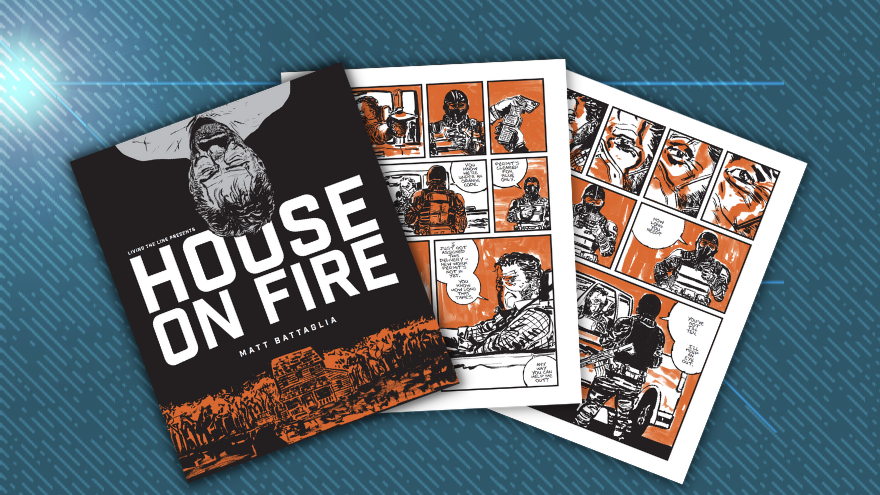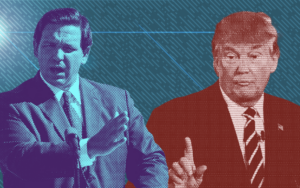In a post-COVID world the line between dystopian fiction and harrowing reality has blurred, highlighting the question: does art imitate life, or does life imitate art?
Writer and artist Matt Battaglia demonstrates Aristotle and Plato’s concept of mimesis in his two-tone sepia debut graphic novel, House on Fire, which depicts one man’s journey venturing away from his rural home into a familiar yet authoritarian metropolis in search of his wife’s medication in a not-too-distant future.
Battaglia, who began coloring books for BOOM! Studios and Roche Limit at Image Comics, ventures into the writer’s chair, skipping didactic dialogue in favor of visual-oriented storytelling that details one couple’s desperation to survive their dystopian reality. Battaglia previously collaborated with fellow author Michael Moreci in 72 Comics’ 2016 Indoctrination.
“People are desperate. We’re desperate.”
House on Fire, published thorough Eisner-award nominated publisher Living the Line, finds the crossroad between a George Orwell and Alan Moore dystopia in which characters are presented the task of navigating human nature and human desire for survival through a propaganda-laden, government-controlled society.
“If everything we do saves just one life, I’ll be happy” — a sentiment echoed by political leaders across the country during the COVID-19 pandemic — is a proposition in House on Fire that highlights a moral question: how many deaths from despair and unintended casualties are permitted in the pursuit of safety? Further, who determines the acceptable amount of human suffering in search of a utopian society, and what amount of individual liberties must be traded to ensure the well-being of the collective?
Some readers may experience a sick-reminiscing feeling they’ve been transported back in time to March 2020 during the beginning of the COVID-19 outbreak with lockdowns, masks and other safety measures enacted by political leaders. While some policies, perhaps, may have seemed reasonable, other imposed policies seemed arbitrary and simply served as a power flex by a bureaucratic state.
Other readers, however, may suggest we’re already living in Battaglia’s dystopia as Americans fall destitute, struggling to keep pace with a government and elite push for progressive policies which in turn leave Americans bartering necessities for basic comforts.
“The carousel we’re trapped on. It just keeps getting worse.”
House on Fire‘s characters are faced with moral questions of humanity in compliance with authority that contrast with the pursuit of human desires.
The unnamed central character walks a fine line of survival between compliance with government policies and disobedience. He is further presented with a life-altering decision which further rebukes the responsibility of safety being granted to governments and instead highlights individual responsibility for safety.
Readers will find a familiar yet cathartic story of family, love and desperation for survival in House on Fire. Even in a dystopian future centered around ensuring safety, danger lurks around every corner.
The COVID-19 pandemic appears to have reignited the post-apocalyptic dystopian art form as Battaglia provides a fresh, yet cautious view into an alternate reality which all too similarly resembles the average American experience.

